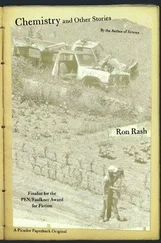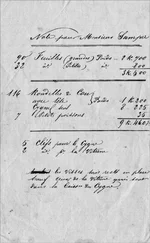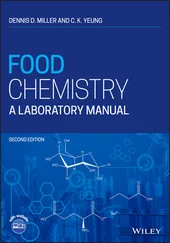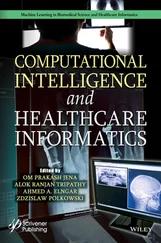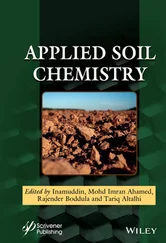The value of Reviews in Computational Chemistry stems from the pedagogically driven reviews that have made this ongoing book series so popular. We are grateful to the authors featured in this volume for continuing the tradition of providing not only comprehensive reviews, but also highlighting best practices and factors to consider in performing similar modeling studies.
Volumes of Reviews in Computational Chemistry are available in an online form through Wiley InterScience. Please consult the Web ( http://www.interscience.wiley.com/onlinebooks) or contact reference@wiley.comfor the latest information.
We thank the authors of this and previous volumes for their excellent chapters.
Abby L. Parrill
Memphis, TN
Kenny B. Lipkowitz
Washington, DC
October 2020
CONTRIBUTORS TO PREVIOUS VOLUMES
Volume 1 (1990)
David Fellerand Ernest R. Davidson, Basis Sets for Ab Initio Molecular Orbital Calculations and Intermolecular Interactions.
James J. P. Stewart, Semiempirical Molecular Orbital Methods.
Clifford E. Dykstra, Joseph D. Augspurger, Bernard Kirtman, and David J. Malik, Properties of Molecules by Direct Calculation.
Ernest L. Plummer, The Application of Quantitative Design Strategies in Pesticide Design.
Peter C. Jurs, Chemometrics and Multivariate Analysis in Analytical Chemistry.
Yvonne C. Martin, Mark G. Bures, and Peter Willett, Searching Databases of Three‐Dimensional Structures.
Paul G. Mezey, Molecular Surfaces.
Terry P. Lybrand, Computer Simulation of Biomolecular Systems Using Molecular Dynamics and Free Energy Perturbation Methods.
Donald B. Boyd, Aspects of Molecular Modeling.
Donald B. Boyd, Successes of Computer‐Assisted Molecular Design.
Ernest R. Davidson, Perspectives on Ab Initio Calculations.
Volume 2 (1991)
Andrew R. Leach, A Survey of Methods for Searching the Conformational Space of Small and Medium‐Sized Molecules.
John M. Troyerand Fred E. Cohen, Simplified Models for Understanding and Predicting Protein Structure.
J. Phillip Bowenand Norman L. Allinger, Molecular Mechanics: The Art and Science of Parameterization.
Uri Dinurand Arnold T. Hagler, New Approaches to Empirical Force Fields.
Steve Scheiner, Calculating the Properties of Hydrogen Bonds by Ab Initio Methods.
Donald E. Williams, Net Atomic Charge and Multipole Models for the Ab Initio Molecular Electric Potential.
Peter Politzerand Jane S. Murray, Molecular Electrostatic Potentials and Chemical Reactivity.
Michael C. Zerner, Semiempirical Molecular Orbital Methods.
Lowell H. Halland Lemont B. Kier, The Molecular Connectivity Chi Indexes and Kappa Shape Indexes in Structure‐Property Modeling.
I. B. Bersukerand A. S. Dimoglo, The Electron‐Topological Approach to the QSAR Problem.
Donald B. Boyd, The Computational Chemistry Literature.
Volume 3 (1992)
Tamar Schlick, Optimization Methods in Computational Chemistry.
Harold A. Scheraga, Predicting Three‐Dimensional Structures of Oligopeptides.
Andrew E. Tordaand Wilfred F. van Gunsteren, Molecular Modeling Using NMR Data.
David F. V. Lewis, Computer‐Assisted Methods in the Evaluation of Chemical Toxicity.
Volume 4 (1993)
Jerzy Cioslowski, Ab Initio Calculations on Large Molecules: Methodology and Applications.
Michael L. McKeeand Michael Page, Computing Reaction Pathways on Molecular Potential Energy Surfaces.
Robert M. Whitnelland Kent R. Wilson, Computational Molecular Dynamics of Chemical Reactions in Solution.
Roger L. DeKock, Jeffry D. Madura, Frank Rioux, and Joseph Casanova, Computational Chemistry in the Undergraduate Curriculum.
Volume 5 (1994)
John D. Bolcerand Robert B. Hermann, The Development of Computational Chemistry in the United States.
Rodney J. Bartlettand John F. Stanton, Applications of Post‐Hartree–Fock Methods: A Tutorial.
Steven M. Bachrach, Population Analysis and Electron Densities from Quantum Mechanics.
Jeffry D. Madura, Malcolm E. Davis, Michael K. Gilson, Rebecca C. Wade, Brock A. Luty, and J. Andrew McCammon, Biological Applications of Electrostatic Calculations and Brownian Dynamics Simulations.
K. V. Damodaranand Kenneth M. Merz Jr., Computer Simulation of Lipid Systems.
Jeffrey M. Blaneyand J. Scott Dixon, Distance Geometry in Molecular Modeling.
Lisa M. Balbes, S. Wayne Mascarella, and Donald B. Boyd, A Perspective of Modern Methods in Computer‐Aided Drug Design.
Volume 6 (1995)
Christopher J. Cramerand Donald G. Truhlar, Continuum Solvation Models: Classical and Quantum Mechanical Implementations.
Clark R. Landis, Daniel M. Root, and Thomas Cleveland, Molecular Mechanics Force Fields for Modeling Inorganic and Organometallic Compounds.
Vassilios Galiatsatos, Computational Methods for Modeling Polymers: An Introduction.
Rick A. Kendall, Robert J. Harrison, Rik J. Littlefield, and Martyn F. Guest, High Performance Computing in Computational Chemistry: Methods and Machines.
Donald B. Boyd, Molecular Modeling Software in Use: Publication Trends.
Eiji Ōsawaand Kenny B. Lipkowitz, Appendix: Published Force Field Parameters.
Volume 7 (1996)
Geoffrey M. Downsand Peter Willett, Similarity Searching in Databases of Chemical Structures.
Andrew C. Goodand Jonathan S. Mason, Three‐Dimensional Structure Database Searches.
Jiali Gao, Methods and Applications of Combined Quantum Mechanical and Molecular Mechanical Potentials.
Libero J. Bartolottiand Ken Flurchick, An Introduction to Density Functional Theory.
Alain St‐Amant, Density Functional Methods in Biomolecular Modeling.
Danya Yangand Arvi Rauk, The A Priori Calculation of Vibrational Circular Dichroism Intensities.
Donald B. Boyd, Appendix: Compendium of Software for Molecular Modeling.
Volume 8 (1996)
Zdenek Slanina, Shyi‐Long Lee, and Chin‐hui Yu, Computations in Treating Fullerenes and Carbon Aggregates.
Gernot Frenking, Iris Antes, Marlis Böhme, Stefan Dapprich, Andreas W. Ehlers, Volker Jonas, Arndt Neuhaus, Michael Otto, Ralf Stegmann, Achim Veldkamp, and Sergei F. Vyboishchikov, Pseudopotential Calculations of Transition Metal Compounds: Scope and Limitations.
Thomas R. Cundari, Michael T. Benson, M. Leigh Lutz, and Shaun O. Sommerer, Effective Core Potential Approaches to the Chemistry of the Heavier Elements.
Читать дальше

